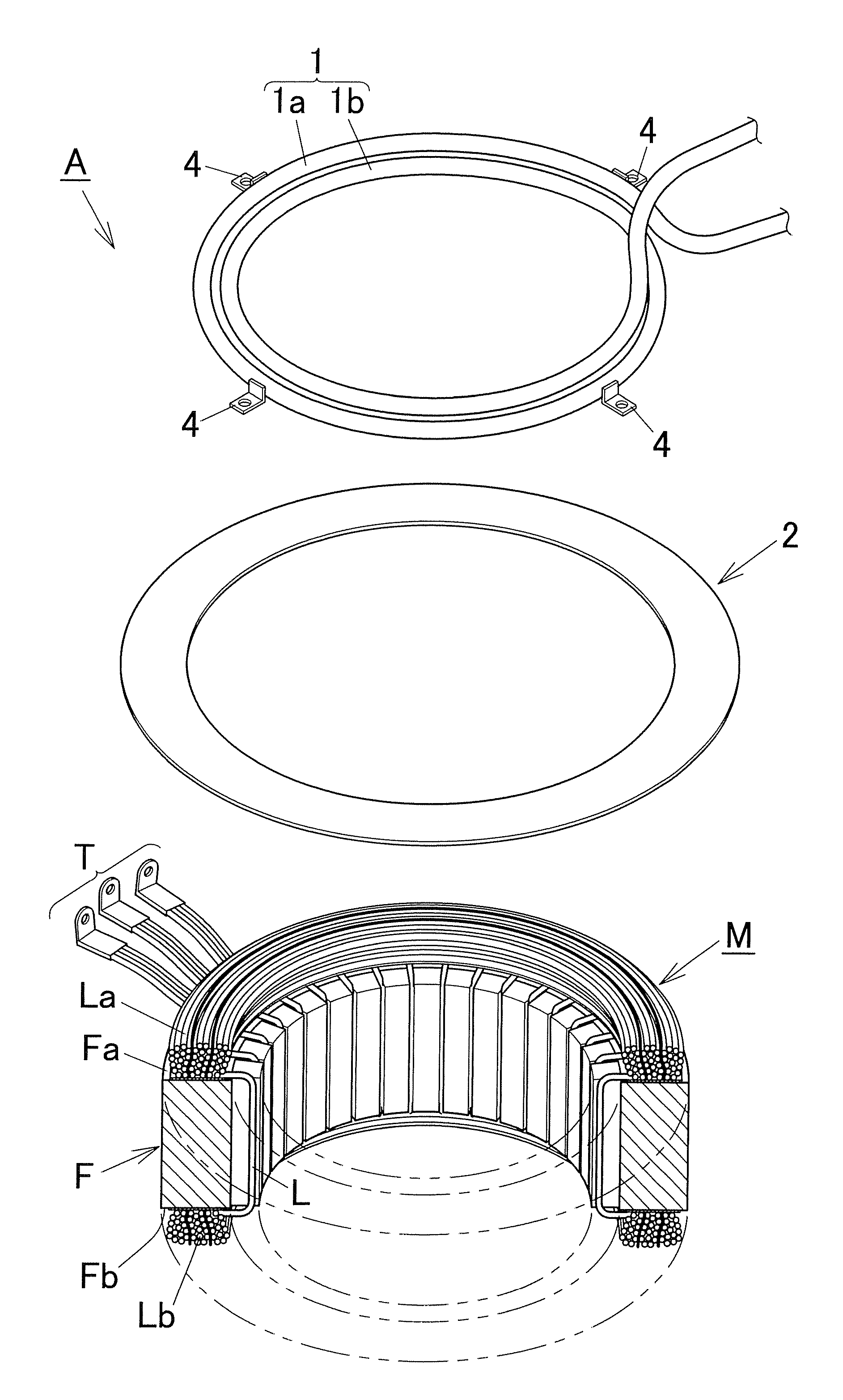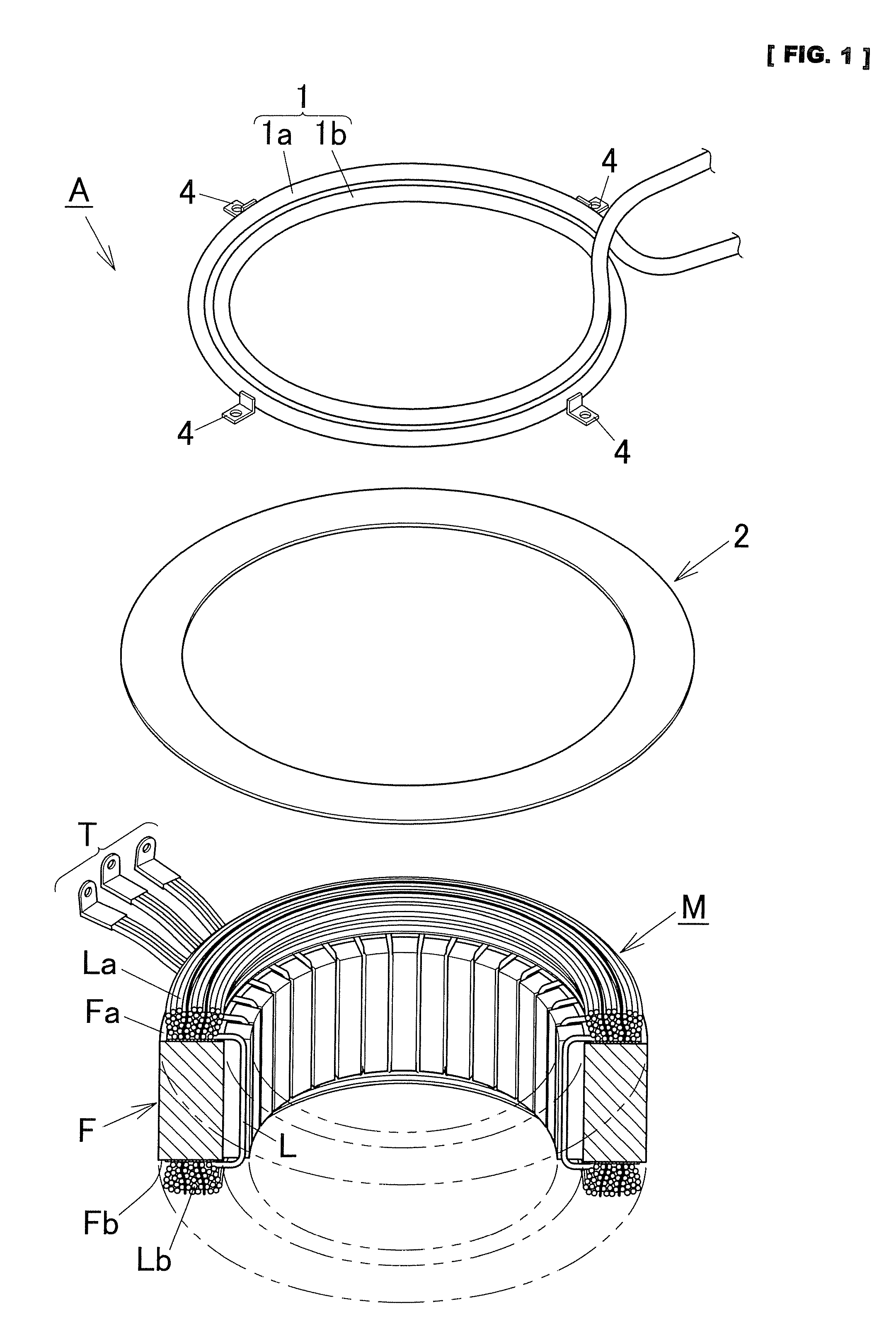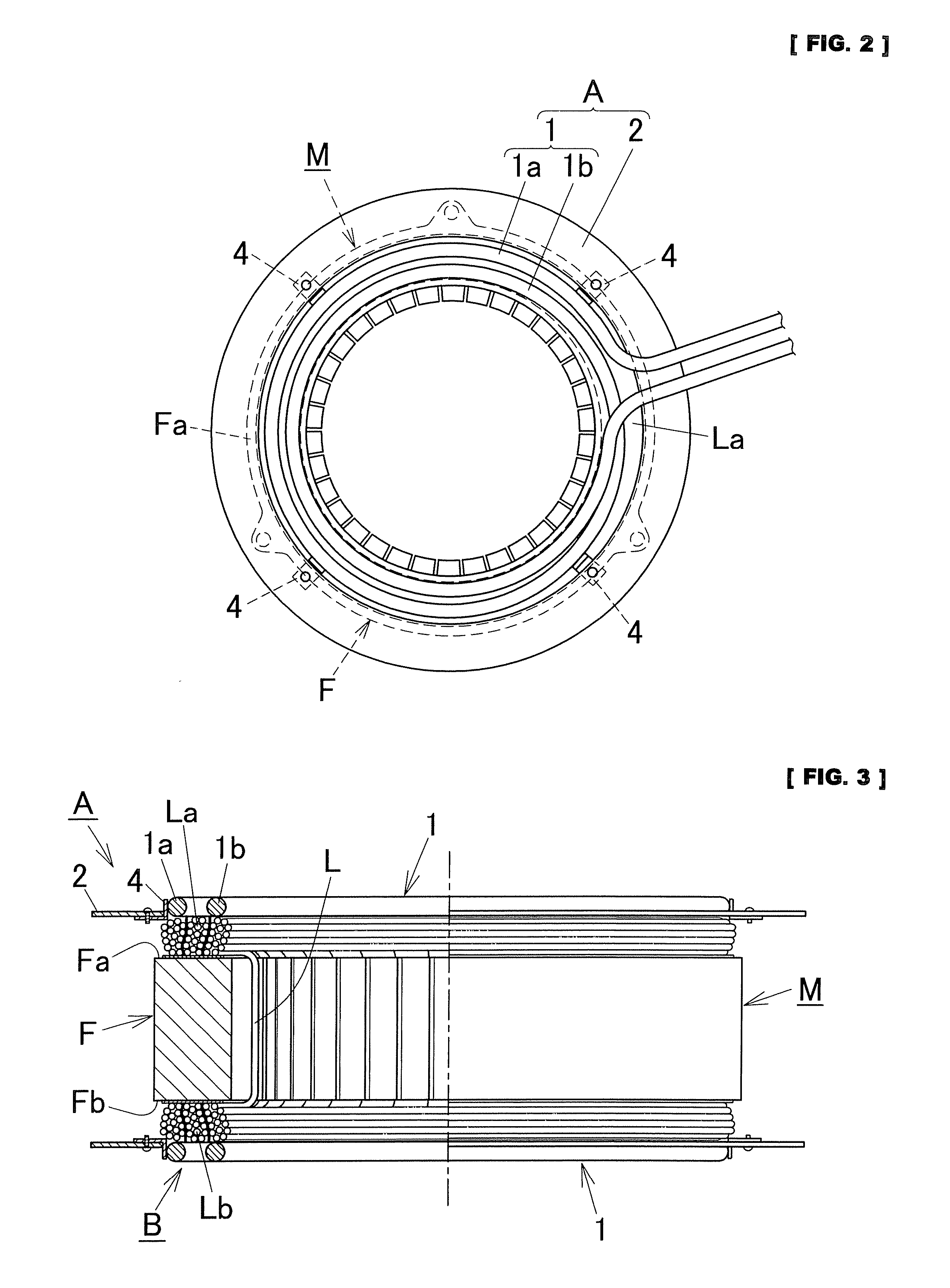Stator coil heating apparatus and stator coil heating method
a stator coil and heating apparatus technology, applied in the direction of induction heating, dynamo-electric machines, packaging, etc., can solve the problems of increasing the temperature of the stator in a slow manner, increasing the cost of electrical energy consumption, and increasing the heating time of the heating process. , to achieve the effect of high cost, and prolonging the heating tim
- Summary
- Abstract
- Description
- Claims
- Application Information
AI Technical Summary
Benefits of technology
Problems solved by technology
Method used
Image
Examples
Embodiment Construction
[0109]FIG. 1 is an exploded perspective view showing a stator coil heating apparatus according to an embodiment of the present invention, FIG. 2 is a plain view showing the same stator coil heating apparatus set on a stator, and FIG. 3 is a half cutaway view showing the same stator coil heating apparatus set on a stator.
[0110]This embodiment will be explained with the example of heating a stator coil of a stator that is an automotive electrical generator. However, it is not limited thereto.
[0111]As shown in FIG. 1 through FIG. 3, a stator M comprises a circular core F constructed of a plurality of thin silicon steel plates layered in the thickness direction and a three-phase stator coil L wound around the core F. And circular winding coil bases La and Lb are sticking out of the end faces Fa and Fb of the core F in the thickness direction (the axial direction: the vertical direction in Figure) thereof, respectively. The entire stator coil L including these winding coil bases La and L...
PUM
 Login to View More
Login to View More Abstract
Description
Claims
Application Information
 Login to View More
Login to View More - R&D
- Intellectual Property
- Life Sciences
- Materials
- Tech Scout
- Unparalleled Data Quality
- Higher Quality Content
- 60% Fewer Hallucinations
Browse by: Latest US Patents, China's latest patents, Technical Efficacy Thesaurus, Application Domain, Technology Topic, Popular Technical Reports.
© 2025 PatSnap. All rights reserved.Legal|Privacy policy|Modern Slavery Act Transparency Statement|Sitemap|About US| Contact US: help@patsnap.com



